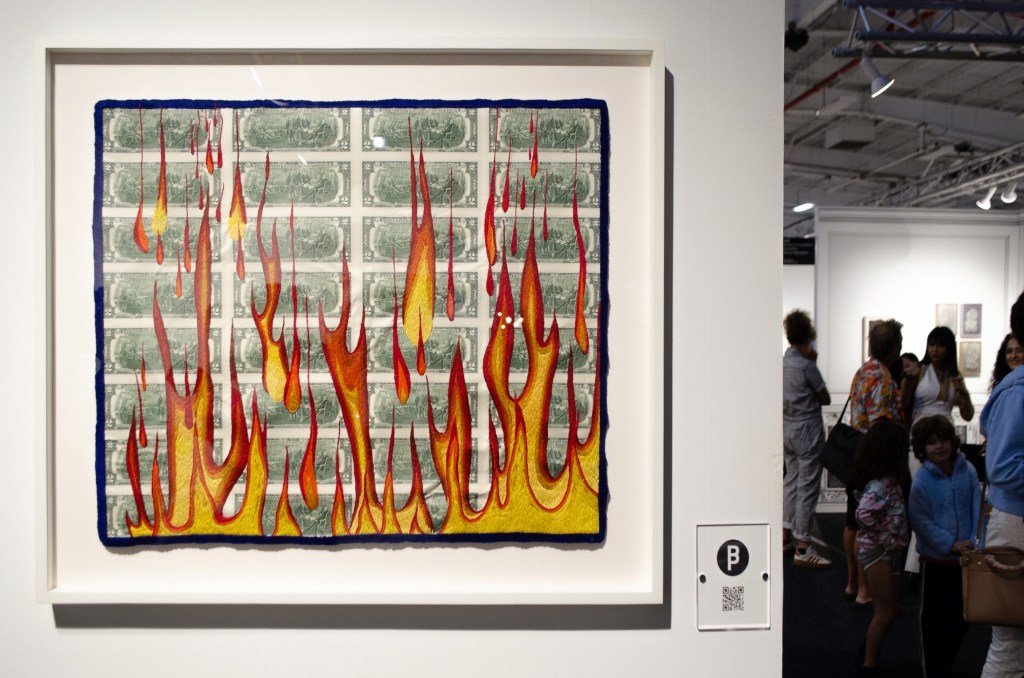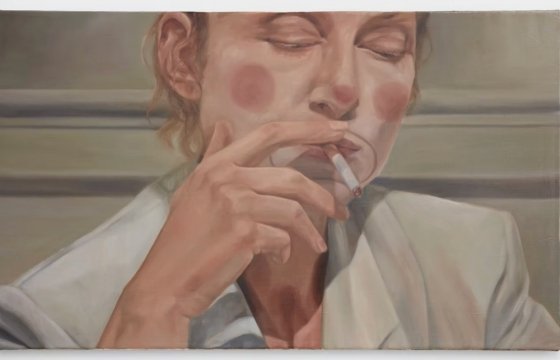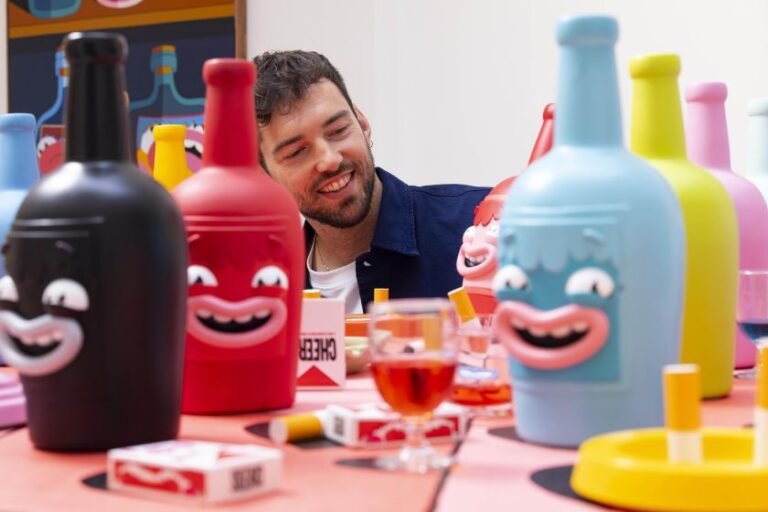

As I circled around the dozens of booths along the three wide lanes at Art on Paper on Thursday, September 4, one stood out above the rest. On the bare white walls were Moleskine journals, much like the small ones I use, except these were spread open to Nicolas V Sanchez’s ballpoint pen drawings of the many corners of his family members’ homes.
This year marks Sanchez’s eighth time showing at Manhattan’s Art on Paper, he told me, alongside around 100 exhibitors at Pier 36 through Sunday, September 7.

Smiling infectiously in his booth, Sanchez stood among his intimate journal works depicting pastoral and familial scenes from his Midwest-meets-Mexican upbringing, created with a combination of ballpoint pens. Ranging in price from about $3,000 to $6,000, three of Sanchez’s works had already sold during the first hours of the fair before I arrived, including two notebooks containing drawings of horses and one depicting the outside of his aunt’s fridge with forensic detail.
“Because it’s pen, I can’t erase it, so I just have to keep going,” Sanchez said of his process drawing on the 4.5 x 7-inch (~11.4 x 17.8 cm) notebooks. “You just commit to it at a certain point, and then that’s kind of the beauty of it.”


Sanchez’s still life of his aunt’s fridge, “Refri de mi Tia Blanca” (2025), features ruled notebook paper letters from his nephew held up by magnets. The biggest challenge in creating this piece, he said, was the meta task of ensuring that the letter within the notebook appeared to have been written in pencil rather than sketched by pen.
The Los Angeles-based gallery Arts Unified’s booth featured another writing accessory. Illustrator Adam Greener’s clipboards initially stunned me due to their gargantuan size, but their familiar form encouraged me to take a closer look.


Greener’s $13,500 “Choices XL” (2022) is a giant ruled piece of paper tucked into a giant clipboard on which the sentence “I will start making better choices” is repeatedly written. A gallery staff member told me that Greener’s work draws upon his school years, during which his doodles would land him in detention. Nearby clipboard pages inscribed with comically blown-up “F” grades transported me back to failing out of the Albuquerque Public School gifted program (in writing, by the way) circa 2011.
At the Lower East Side-based gallery Van Der Plas Gallery’s booth, I found two artists who were excited to talk about their work: Susan Day, who flew in from Canada that morning, and New York City-based artist Jason McLean. Day was selling her “dream-inspired” drawings of air traffic control maps of Canadian airspace.
“This is the stuff that kind of keeps me going,” Day said, describing the fair. “It puts my work into some context, and I think having other people’s eyes see my work … is a huge connection for me.”



Day said her experiences at the New York art fairs bring her much more traffic than she usually receives in Canada. Showing alongside her was McLean, a fellow Canadian, who walked me through “Future Directions” (2025), a self-portrait that is also a map of New York City.
Still other kinds of paper media could be found at Art on Paper’s fair within a fair, BOOKsmART, such as mixed-media artist Seth Apter’s stunning display of art books meditating on time and aging. Last year, Apter told me, he sold 12 of the 17 books he brought with him to the meta fair, despite initially doubting the fair audience’s interest in artist books. At his booth this year, his works were priced between $600 and $1800. Typically, he told me, he sells his works online and at institutions where he teaches.

For my final stop, I went where the money was, like the brain-rotten Gen-Zer I am.
That is, Philadelphia-based Stacey Lee Webber’s embroidered cash. Working with real uncut sheets of bills from the United States Mint, Webber accessorizes the well-bred, well-read, and well-fed faces on American paper money with tattoos, clown noses, and cigarettes. Webber first took me to her $32,000 embroidered sheet of $2 bills, “Two Dollar Fire” (2023). She flipped the work over to its backside, on which the scene of the founding fathers signing the Declaration of Independence is set ablaze with flame-colored thread.

“It’s fun to stitch away,” Webber said. “It’s tearing away at this structure of money we have.”
At the fair as a whole, it was to booths showcasing artists like Sanchez, Apter, and Webber, who ingeniously annotated everyday paper objects with their own sense of individuality, that visitors flocked during the first hours. In contrast to their idiosyncratic visions, the more conventional booths — standard drawings, paintings, and photographs — felt, well, two-dimensional.



